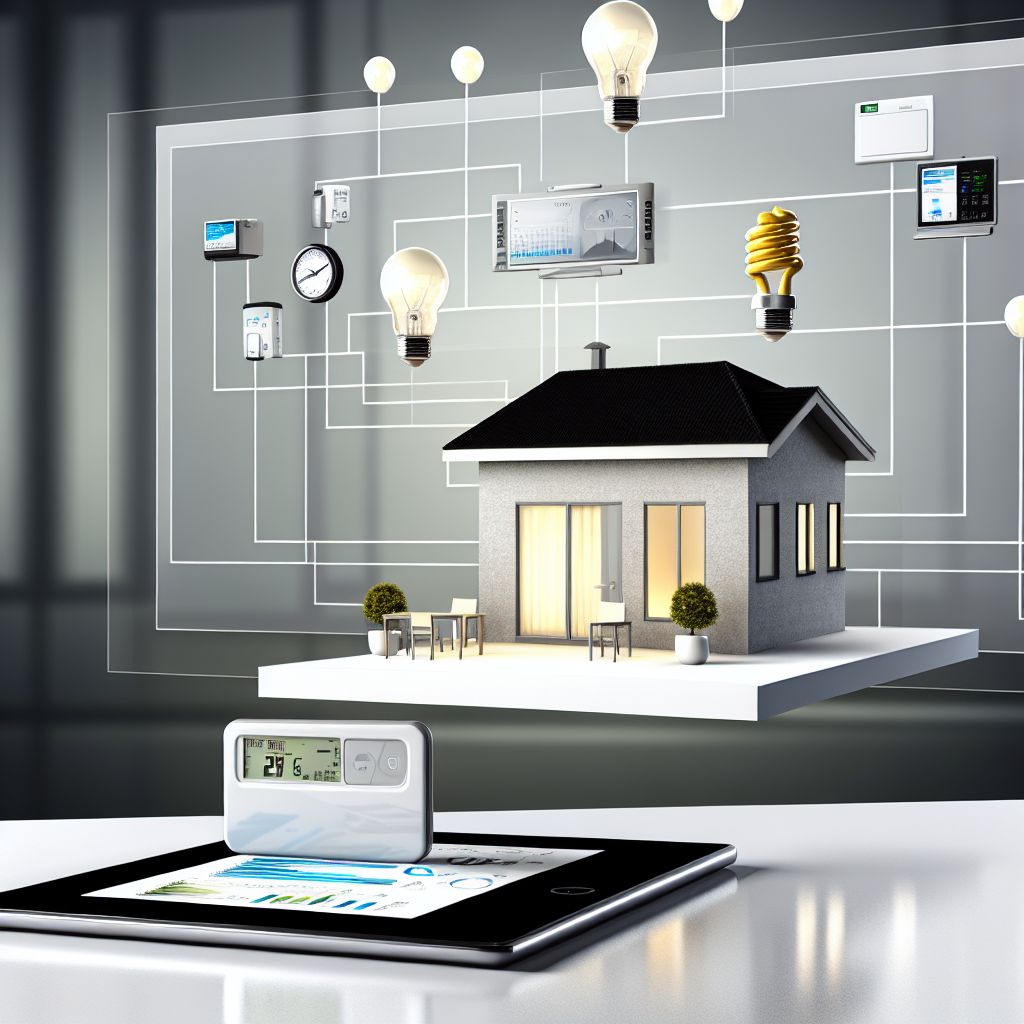-
- AI for Smart Home Energy Management
- Understanding Smart Home Energy Management
- Configuration Steps for Implementing AI in Smart Home Energy Management
- Step 1: Assess Your Energy Needs
- Step 2: Choose the Right Smart Devices
- Step 3: Set Up a Centralized Control System
- Step 4: Implement AI Algorithms
- Step 5: Monitor and Optimize
- Practical Examples of AI in Smart Home Energy Management
- Example 1: Smart Thermostats
- Example 2: Energy Monitoring Systems
- Best Practices for Smart Home Energy Management
- Case Studies and Statistics
- Code Snippets for Integration
- Conclusion
AI for Smart Home Energy Management

As the world increasingly shifts towards sustainable living, the integration of artificial intelligence (AI) in smart home energy management has emerged as a pivotal solution. This technology not only optimizes energy consumption but also enhances the overall efficiency of home systems. With rising energy costs and environmental concerns, understanding how to leverage AI for energy management is more relevant than ever.
Understanding Smart Home Energy Management
Smart home energy management systems (SHEMS) utilize AI algorithms to monitor, control, and optimize energy usage in residential settings. These systems can analyze data from various sources, including smart meters, appliances, and user behavior, to make informed decisions that reduce energy waste and lower utility bills.
Configuration Steps for Implementing AI in Smart Home Energy Management
To effectively implement AI for smart home energy management, follow these actionable steps:
Step 1: Assess Your Energy Needs
- Conduct an energy audit to understand your current consumption patterns.
- Identify high-energy-consuming appliances and systems.
Step 2: Choose the Right Smart Devices
- Select smart thermostats, smart plugs, and energy-efficient appliances that are compatible with AI systems.
- Ensure devices can communicate with a central hub or cloud service.
Step 3: Set Up a Centralized Control System
- Install a smart home hub (e.g., Samsung SmartThings, Google Nest) to integrate all devices.
- Connect devices to the hub using Wi-Fi, Zigbee, or Z-Wave protocols.
Step 4: Implement AI Algorithms
- Utilize machine learning algorithms to analyze energy usage data.
- Develop predictive models to forecast energy consumption based on historical data.
Step 5: Monitor and Optimize
- Regularly review energy consumption reports generated by the AI system.
- Adjust settings and schedules based on insights to maximize efficiency.
Practical Examples of AI in Smart Home Energy Management
Here are some real-world applications of AI in smart home energy management:
Example 1: Smart Thermostats
Smart thermostats like the Nest Learning Thermostat use AI to learn user preferences and adjust heating and cooling schedules accordingly. By analyzing patterns, these devices can reduce energy consumption by up to 15%.
Example 2: Energy Monitoring Systems
Systems like Sense monitor real-time energy usage and provide insights into which devices are consuming the most power. This data helps homeowners make informed decisions about energy use.
Best Practices for Smart Home Energy Management
To enhance the performance and efficiency of your smart home energy management system, consider the following best practices:
- Regularly update device firmware to ensure optimal performance and security.
- Utilize energy-saving modes on appliances whenever possible.
- Incorporate renewable energy sources, such as solar panels, into your system.
- Engage in behavioral changes, such as turning off devices when not in use.
Case Studies and Statistics
Research indicates that homes equipped with smart energy management systems can reduce energy consumption by 10-30%. A case study conducted by the Lawrence Berkeley National Laboratory found that households using smart thermostats saved an average of $140 annually on energy bills.
Code Snippets for Integration
For those looking to customize their smart home energy management system, here’s a simple Python code snippet to connect to a smart thermostat API:
import requests
def set_temperature(thermostat_id, temperature):
url = f"https://api.smartthermostat.com/v1/devices/{thermostat_id}/set_temperature"
payload = {"temperature": temperature}
response = requests.post(url, json=payload)
return response.json()
# Example usage
set_temperature("12345", 72)
Conclusion
AI for smart home energy management is not just a trend; it is a necessary evolution in how we consume energy. By following the configuration steps outlined, utilizing practical examples, and adhering to best practices, homeowners can significantly reduce their energy consumption and costs. As technology continues to advance, the potential for AI in energy management will only grow, making it an essential component of modern living.